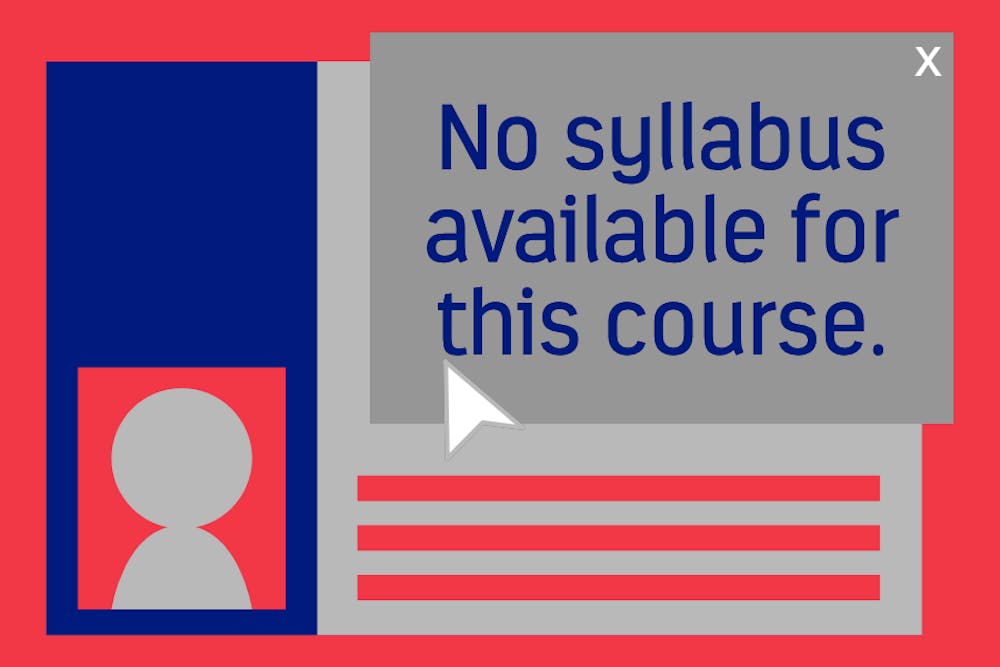This time of year, Penn students are selecting classes for the spring semester. During their selection process, students may consider a plethora of factors, including the timing of course meetings, difficulty and instructor ratings given on the Penn Course Review website, and courses required to complete major or school requirements.
One piece of information, however, is often lacking: course syllabi. Too often, when students search for courses on PennInTouch, their options do not have a class syllabus, which lays out the expectations, grading scheme, required textbooks, and material covered for that class. Such information can prove invaluable, since it allows students to assess the scope of a course, how much materials may cost, and, ultimately, whether registering is worth it. As such, Penn professors must make every effort to make class information more transparent.
The lack of access to syllabi is not a new issue; indeed, The Daily Pennsylvanian Editorial Board wrote about the issue as recently as August of 2019. Since then, COVID-19 has disrupted the learning landscape, leaving whole classes of students unaccustomed to a typical academic schedule. But during that time, progress was made on the issue. Led by the College Dean’s Advisory Board, professors uploaded syllabi en masse to Penn InTouch during the all-online semesters. But now that we’ve returned to in-person classes, Penn InTouch is sparse for syllabi.
Having access to course syllabi has several benefits. Most obviously, knowing what the class entails allows students to make the decisions that best suit them. For example, if a course is exam-based and a student doesn’t test well, they may want to look for alternatives. Additionally, having information about courses available ahead of time could make it less likely for students to drop. A column by two officers on the College Dean’s Advisory Board said over half of all students surveyed have made final decisions regarding dropping a class after seeing the syllabus.
Furthermore, access to course syllabi is a financial equity issue. In 2018, students spent an average of over $1,300 on course textbooks, for which some of them had limited purchasing options. Knowing what books are required for a course, and how one might have access to them, can save students hundreds of dollars per course per semester, as one may be able to plan ahead. For financially vulnerable students, this can prove to be particularly valuable.
Admittedly, syllabi are not binding documents, nor should they be. Events ranging from natural disasters to disruptive presidential elections to a global pandemic have caused professors to divert from their course plans, altering both the introduction and timing of concepts listed on a syllabus. What they do offer, however, is an opportunity to know what one is getting into when signing up for a class.
Penn’s advance registration system has numerous problems, and it is built on outdated online infrastructure. While the introduction of PennInTouch's replacement will solve some of these issues, students can only make optimal academic decisions if they have access to all available information. As such, all professors should upload syllabi in advance of a class’s initial meeting.
Editorials represent the majority view of members of The Daily Pennsylvanian, Inc. Editorial Board, which meets regularly to discuss issues relevant to Penn's campus. Participants in these meetings are not involved in the reporting of articles on related topics.
Guest Column by College Dean's Advisory Board | We need access to course syllabi now
Editorial | Penn professors, make syllabi accessible before classes start









